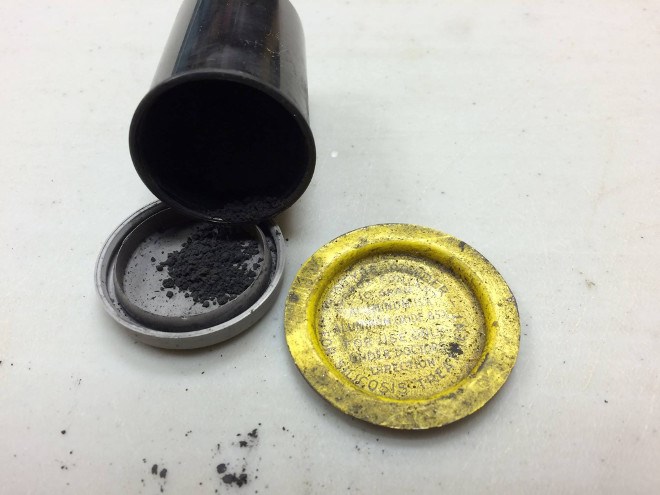Vindication.
That was the feeling that washed over Janice Martell after reading a new report confirming that miners exposed to aluminum powder while on the job were more likely to develop Parkinson’s disease.
“I can’t even put it into words; there’s so much emotion,” she said.
Martell is a long-time advocate for miners who ingested McIntyre Powder as a condition of work at various Northern Ontario mines between 1943 and 1980.
“Vindicated is a good word, and I’m very lucky that this resonated with people.”
Devised by mining executives as a purported preventive measure against the lung disease silicosis, McIntyre Powder was a finely ground aluminum dust administered to miners before every shift. Managers had the power to terminate employment for those who refused to ingest it.
It was widely used at mines across Canada and at other industrial sites across the globe, including in Australia, the U.S., Belgian Congo and Mexico.
Mines stopped using the powder after studies showed it provided no health benefit to the miners.
May 7, the Workplace Safety and Insurance Board (WSIB) released the findings of its two-and-a-half-year examination into the connection between McIntyre Powder exposure and neurological diseases such as Parkinson’s, Alzheimer’s, and other motor neuron conditions in miners.
The study – Investigation of McIntyre Powder Exposure and Neurological Outcomes in the Mining Master File Cohort: FInal Report – was led by Dr. Paul Demers, the senior scientist at Ontario Health (Cancer Care Ontario), a professor at the University of Toronto in the Dalla Lana School of Public Health, and the director of the Occupational Cancer Research Centre (OCRC).
“This study of Ontario miners found evidence of an association between McIntyre Powder exposure and increased risk of Parkinson’s disease, with the highest risk among workers exposed in gold mining,” the report finds.
“No association was observed for McIntyre Powder exposure and Alzheimer’s disease or motor neuron disease, but an overall increased risk in miners compared to the general population was observed.”
In the study, Demers found that miners with McIntyre Powder exposure had a 34 per cent greater incidence rate of Parkinson’s disease and a 19 per cent greater rate of parkinsonism compared to miners that had never been exposed to McIntyre Powder.
Parkinsonism is a group of neurological disorders that cause movement problems similar to those seen in Parkinson's disease such as tremors, slow movement and stiffness.
Additionally, the research found that the risk of Parkinson’s increased the longer a miner had been exposed to McIntyre Powder, and was highest for miners that had been exposed for 10 years or more.
There is also evidence, the report notes, that the risk of Parkinson’s disease was highest among workers that had been exposed after 1956, when the powder’s particle size became smaller and easier to ingest.
Scott Bujeya, WSIB’s senior vice-president of claims management, provided a prepared statement to media on the release of the report:
“We know that when a loved one gets sick, it’s natural to ask why. We asked that question, too, which is why we engaged Dr. Paul Demers to conduct an independent study to examine the potential neurological effects of McIntyre Powder exposure on Ontario miners who were exposed to it.
“Thanks to this study, we now have scientific evidence of an association between Parkinson’s disease and McIntyre Powder and may be able to provide compensation to some miners and their families.
“Janice Martell and others brought a lot of passion and energy to exploring the potential effects of McIntyre Powder and we appreciate everyone’s patience as we worked to better understand the issue and provide the answers they deserve.”
The WSIB said it is now moving “as quickly as possible” to review the pending claims related to Parkinson’s that were submitted by McIntyre Powder-exposed miners and to provide any compensation they may be entitled to.
Martell said she’s aware of at least two dozen claims that were previously denied by the WSIB, and she’s hopeful their status will now change.
But for many of the miners she’s worked with, compensation was never the primary incentive.
“The validation and the willingness to stand up is the biggest motivation that I’ve heard,” she said.
The WSIB’s findings come too late for Martell’s father, Jim Hobbs, a former uranium and nickel miner who was diagnosed with Parkinson’s in 2001 and died of the disease nearly two years ago.
But Martell said the study confirms her belief in the importance of the work of organizations like the Occupational Health Clinics for Ontario Workers (OHCOW), which helped gather the information that formed the basis of the WSIB study.
There are other clusters of disease – respiratory disorders, cancers, cardiovascular issues – that have popped up amongst the miners exposed, which Martell strongly believes should also be studied.
And she believes occupational disease in general requires more research and follow-up than what it’s typically been given.
But that depends on money and government support.
“I hope that the Ministry of Labour will take a look at this and realize it is in everyone’s best interest, economically and otherwise, to take this seriously, to investigate what kind of exposures are causing these issues, and to prevent future things from happening,” she said.
“Because I’m not going to stop until they change that system and give occupational disease the kind of attention it needs.”
